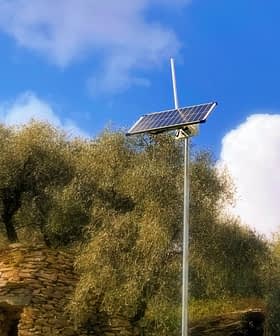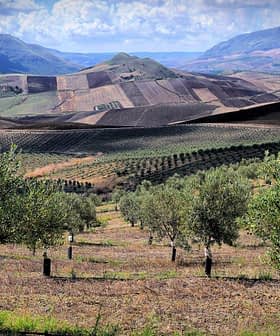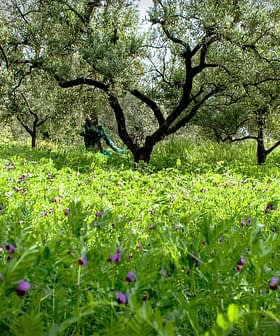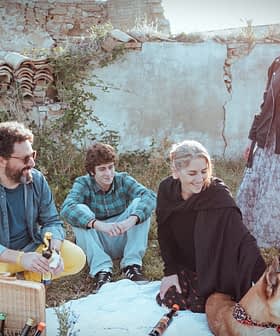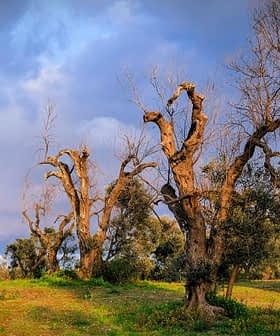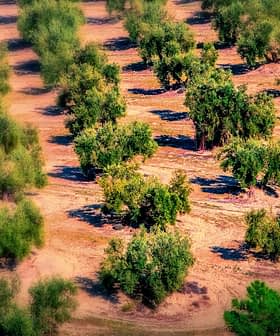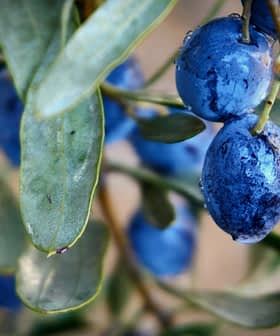Ancient Olive Groves on Capri Are Reservoirs of Biodiversity
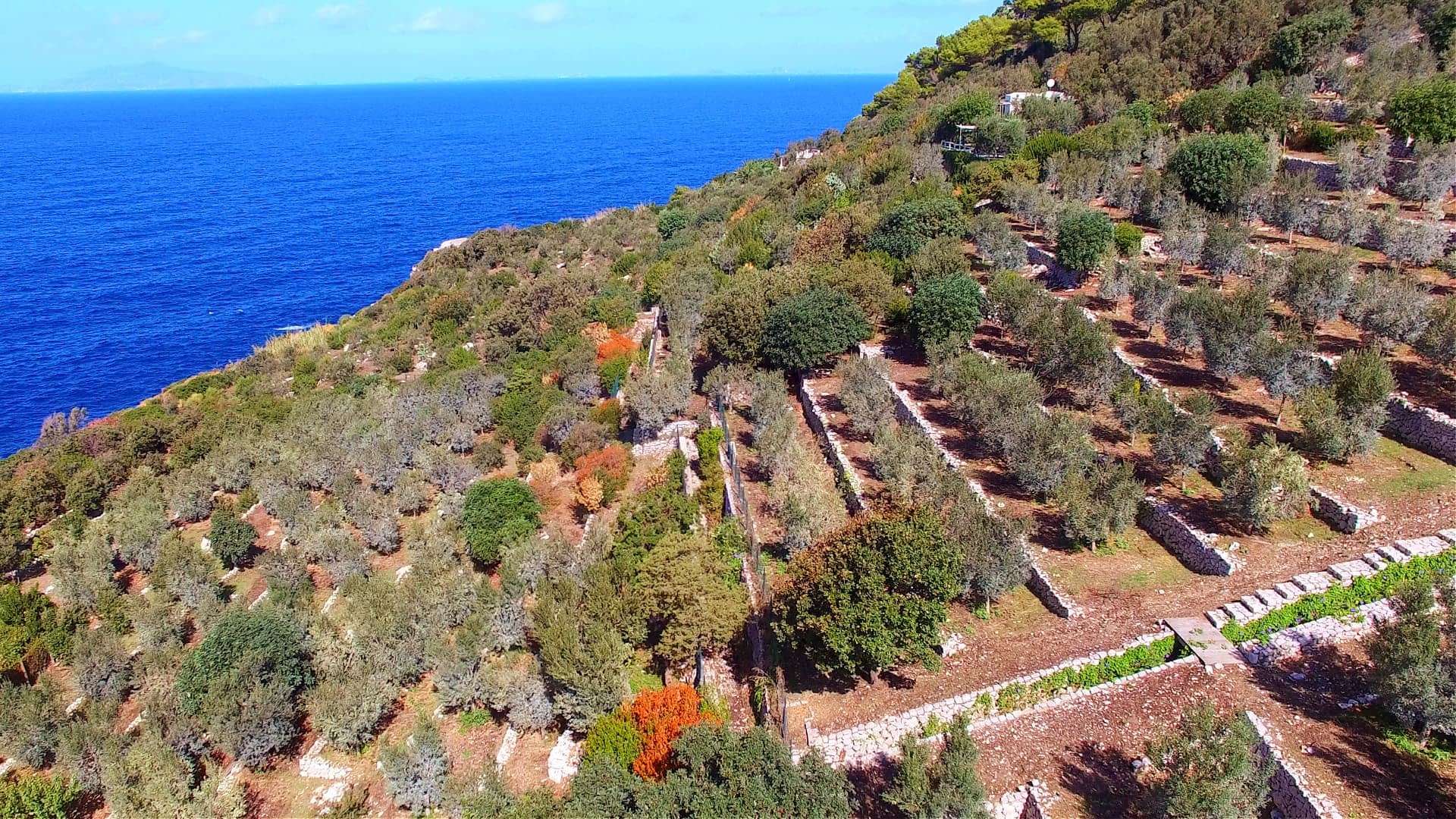
A study of ancient olive trees on Capri led to the discovery of new olive varieties, with genetic profiles enriching the IBBR-CNR collection. The research found that the trees were likely introduced to the island by Greek settlers and friars, and their genetic diversity could be useful in addressing global agricultural challenges like climate change.
A study of the ancient olive trees on Capri has led to the discovery of previously unknown olive varieties and other interesting insights into the age and origin of the monumental trees growing on the Italian island.
The research, published in Scientia Horticulturae by the Institute of Biosciences and Bioresources of the National Research Council (IBBR-CNR) of Perugia, followed more than a decade of restoration work done by L’Oro di Capri in the abandoned olive groves on the western part of the island.
Identifying previously unknown ancient genotypes… has great utility when it comes to finding solutions for today’s global agricultural challenges.
“Our investigation focused primarily on the ancient trees, according to the indications received by the association’s technical committee,” Soraya Mousavi, the research group’s leader, told Olive Oil Times. “We gathered 67 samples from 27 monumental olive trees.”
The researchers collected samples from the canopy and rootstock. “We usually analyze these two parts of the ancient trees separately to detect whether there are grafting scenarios,” Mousavi said.
See Also:Researchers Identify Three Olive Varieties Resistant to Pervasive FungusHowever, only canopy samples were taken in 13 trees where a small trunk sprouted from the original stump or the trees grew like shrubs.
The molecular identification revealed that most samples are genetically identical to the variety Dritta di Moscufo, native to the central Italian region of Abruzzo.
Grafts were found in two olive trees, the canopies of which belong to the variety, while most of the trees turned out to be clonally propagated.
The genotypes of a smaller group of samples were identical to the Throumbolia variety, mostly grown on the Greek island of Crete.
Furthermore, the genetic profiles of Itrana, Frantoio and Leccino were found in a few other trees.
“An interesting finding is the detection of 21 ancient genotypes which turned out to be unique after having been compared with 475 olive cultivars worldwide,” Mousavi said. “All this results in considerable genetic diversity on the island.”
The plant material was genotyped using single-sequence repeat markers, widely applied for cultivar characterization in most olive germplasm collections.
Now, the detected genotypes will enrich the IBBR-CNR collection, which includes a database with more than 5,000 genetic profiles and an olive DNA repository with more than 10,000 samples.
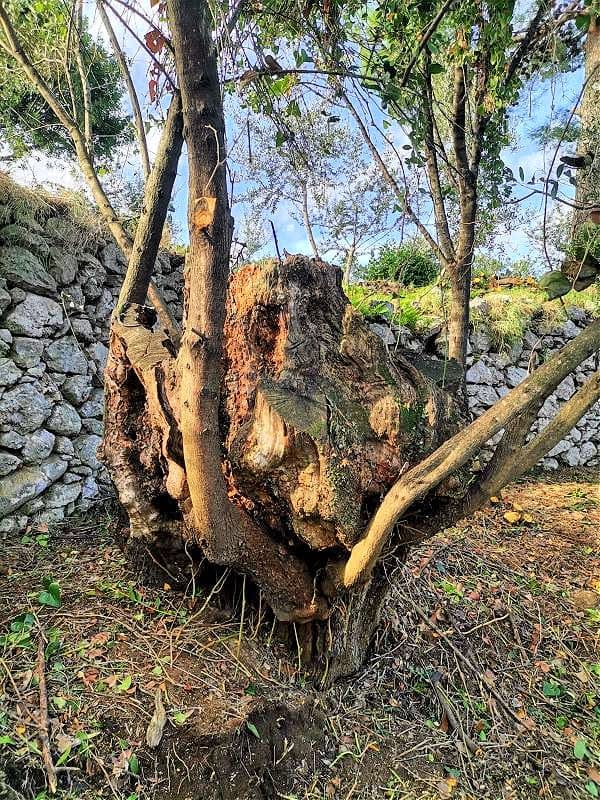
An ancient olive tree in Anacapri on the island of Capri (Photo: L’Oro di Capri)
The database and repository represent fundamental reference points for germplasm banks at a national and international level.
“Having found trees of the Throumbolia variety, we delved into the history of the olive cultivation on the island to understand how and when these plants arrived,” co-author Roberto Mariotti said. “Documents provided by our colleagues who study the history and archeology of the island testify that olive cultivation was already practiced 500 years ago.”
“The presence of Greek people is attested in ancient times on the island,” he added. “We can hypothesize that they introduced and cultivated varieties which seemed interesting at the time for trade or other purposes, especially considering that Throumbolia is a variety with large fruits.”
Meanwhile, trees belonging to the Dritta variety were likely brought to the island by friars from the Moscufo monastery in the province of Pescara, Abruzzo.
Furthermore, birds may have played a part in spreading the other olive genotypes on the island.
“The olive trees have been both propagated by those who moved to the island bringing the trees with them from other places and born from seeds which have been dispersed by birds, especially migrators,” said co-author Saverio Pandolfi.
“Often due to these factors, it is easy to find a rich genetic diversity within the olive trees widespread on islands,” he added. “Birds take the seeds from another place, keep them in their stomachs or crops [part of the alimentary tract used for storage of food before digestion] and eventually drop them.”
“Their digestive system creates ideal conditions for the development of the seeds, which then are naturally fertilized and, once on the ground, germinate very quickly,” Pandolfi continued. “Whatever the origin, from humans or birds, the genetic uniqueness of these plants makes them useful for the upcoming studies.”
Radiocarbon dating estimates that 12 monumental trees on the island are between 100 and 900 years old.
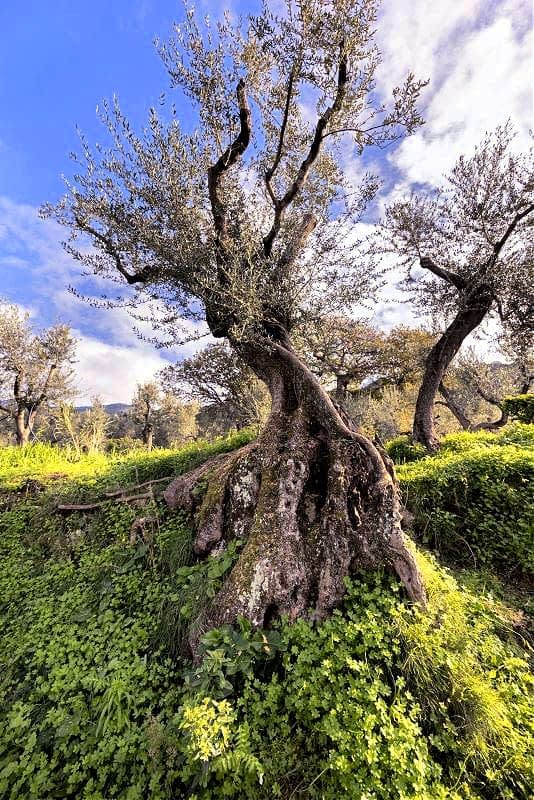
Researchers estimate that the oldest olive trees on Capri are between 100 and 900 years old. (Photo: Luciano Romano)
This is evidence that olive tree cultivation and domestication went on for a long time before the olive groves were abandoned in the past century and eventually recovered by L’Oro di Capri.
“Identifying previously unknown ancient genotypes, which translate into new olive varieties at our disposal, has great utility when it comes to finding solutions for today’s global agricultural challenges,” Mariotti said.
“The characteristics that have made the trees resistant for hundreds of years in this specific environment can be exploited to address today’s issues, paying particular attention to the urgent problem of climate change, which is greatly affecting the yield of the olive trees.”
Today, the unique genotypes found on the island may be used in upcoming breeding projects. In agronomic terms, the olive trees could be propagated and tested for environmental and biological stresses.
“These trees indeed represent a useful genetic reservoir that can be used to address new and emerging diseases,” Pandolfi said. “Hence, they have a great value in terms of conservation of genetic material.”
In the study’s conclusions, the researchers emphasized how humans have contributed significantly to the drastic decrease in olive diversity at all levels, from subspecies to cultivars.
They thus believe it is now “mandatory” to retrieve the remnants of ancient genotypes, starting with the study of monumental olive trees and their rootstocks, and to preserve the biodiversity included in the ancient olive groves worldwide.
“We do not know much about the agronomical behavior of these olive trees, and now the aim is to understand this aspect,” Pandolfi said. “It is important to keep a database with all the information collected, including their location and photos. This will also help create an oleotourism itinerary along which visitors can find scientifically validated information.”


